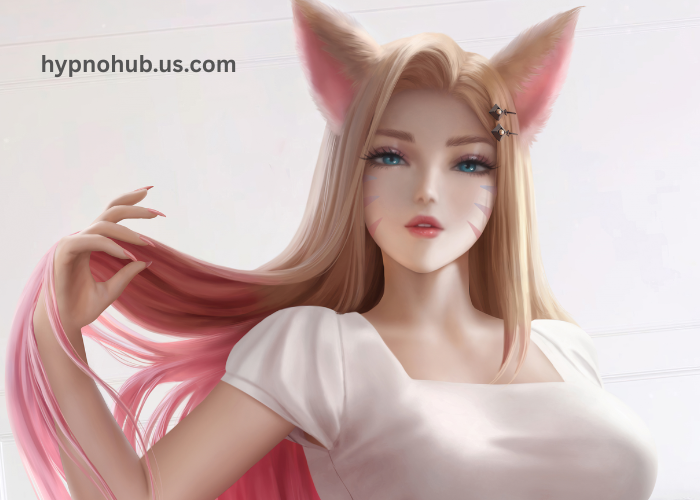In Japanese mythology, Tengu are legendary creatures often depicted as supernatural beings with bird-like features. They have been a part of Japanese folklore for centuries, often considered both protectors and tricksters.
Among these Tengu, Nyotengu stands out as a prominent figure. Known as the Tengu Princess, she represents a unique aspect of Tengu lore, intertwining beauty, power, and wisdom. While Tengu are often associated with martial prowess and mystical abilities, Nyotengu’s narrative adds complexity to their character by emphasizing femininity and grace.
Nyotengu is a figure surrounded by mystery, and her story offers a glimpse into the deeper, less understood facets of Japanese mythology. Understanding her role in the folklore requires delving into the symbolism of Tengu, their origins, and the significance of Nyotengu as both a guardian and a fearsome entity.
Key Points:
- Nyotengu is a female Tengu from Japanese mythology, known for her powerful and mystical abilities.
- She represents a unique combination of beauty, strength, and intelligence in Tengu lore.
- Nyotengu plays a dual role as a protector and a potential threat in her mythological stories.
Who Is Nyotengu in Japanese Mythology?
Nyotengu, often referred to as the “Tengu Princess,” is one of the most intriguing figures in Japanese folklore. She is a female version of the Tengu, a class of supernatural creatures with bird-like features. Tengu are often depicted as having red faces, long noses, and the ability to fly, making them formidable and mysterious figures in mythology.
The origin of Nyotengu traces back to the mountain-dwelling Tengu, who were believed to reside in places like Mount Takao or Mount Kurama. In these regions, Tengu were considered both protectors of the mountains and dangerous tricksters.
Nyotengu, however, is often portrayed as a more nuanced figure, emphasizing grace and beauty while still retaining the characteristic power and mystery of the Tengu.Her role in Japanese mythology varies depending on the source, but one common theme is her association with the teachings of martial arts and the spiritual realm.
She is often portrayed as a guardian of sacred places, using her wisdom and strength to protect the land. At the same time, Nyotengu is not a purely benevolent figure; she also has a more mischievous side, often testing the strength and virtue of those who venture too far into her domain.
Note: While Nyotengu’s image is often connected with beauty and seduction, her power and role as a protector of sacred places emphasize her depth and complexity.
What Are the Origins of Tengu and Nyotengu?
The origins of Tengu can be traced back to ancient Japanese beliefs. In the early days, Tengu were regarded as dangerous mountain demons, with bird-like features symbolizing their connection to nature and the heavens. These creatures were thought to be the spirits of mountain ascetics, known as yamabushi, who had gained supernatural powers through their rigorous practices of meditation and self-discipline.
As time passed, Tengu evolved in the public’s perception. They became more closely associated with Shinto and Buddhist teachings, representing the dual nature of good and evil. Tengu could be protectors of the sacred, but they could also be mischievous tricksters.
The female version, Nyotengu, emerged later as a representation of feminine power and beauty, serving as a symbol of grace and control. Unlike male Tengu, who were often portrayed as warriors or monks, Nyotengu’s character embodies a different aspect of the Tengu mythology, offering a more complex and diverse perspective on these mystical beings.
Nyotengu’s portrayal in art and literature has evolved over time. In many depictions, she is shown as a beautiful woman with the wings and beak of a bird. This dual nature emphasizes the contrast between her beauty and the potential danger she poses. She often resides in mountain temples or remote areas, where she can watch over the land and protect it from harm.
Reminder: Nyotengu’s transformation from a guardian to a seductress demonstrates the changing perception of Tengu over time, reflecting the shift in Japanese cultural attitudes toward both gender and power.
What Is Nyotengu’s Role in Folklore?
Nyotengu’s role in Japanese folklore is multifaceted. On one hand, she is a guardian spirit, often tasked with protecting sacred mountain temples or hidden locations from trespassers.
These areas are typically seen as places of spiritual significance, where Nyotengu serves as a protector, preventing unworthy individuals from entering. This protective role is in line with the Tengu’s association with mountain worship and the reverence for nature.
On the other hand, Nyotengu is often depicted as a figure who tests the worthiness of those who encounter her. In some versions of the myth, Nyotengu challenges those who seek her out by testing their physical and mental strength.
These tests often involve martial arts or riddles, and those who fail are punished or driven away. Nyotengu’s role as both a protector and a judge of character underscores her importance in the mythological landscape.
Her role as a seductress also emerges in some versions of the mythology. Nyotengu is often portrayed as using her beauty to lure men into traps, where they are tested or punished for their desires. This aspect of her character aligns with the more mischievous side of the Tengu, who are known for their trickster-like behavior.
Comparison Table: Nyotengu vs. Male Tengu
| Feature | Nyotengu | Male Tengu |
| Appearance | Beautiful woman with bird-like features | Often depicted as warrior monks or warriors |
| Role | Guardian, seductress, tester of worthiness | Protector, martial artist, guardian |
| Personality | Graceful, cunning, dual nature | Often straightforward, fierce |
What Are the Symbolic Meanings of Nyotengu?
In Japanese mythology, Nyotengu holds deep symbolic meanings that go beyond her role as a character in folklore. The Tengu, including Nyotengu, are often associated with the balance of nature and the spiritual realm. Tengu are seen as intermediaries between humans and the divine, with the ability to move between the physical and spiritual worlds.
Nyotengu, as a female Tengu, symbolizes the balance between strength and grace, beauty and danger. Her dual nature reflects the complexities of femininity, often showing both the nurturing and destructive sides of women. In this way, Nyotengu serves as a reminder of the power that lies within nature, the human psyche, and the spiritual world.
Additionally, her role as a seductress and protector highlights the interplay between temptation and discipline. Nyotengu’s actions often involve a mix of attraction and danger, making her a symbol of the consequences of unchecked desires and the importance of self-control. In this way, Nyotengu teaches important lessons about the balance of good and evil, wisdom, and folly.
Conclusion
Nyotengu, the Tengu Princess, is a fascinating figure in Japanese mythology who embodies the complexities of nature, power, and femininity. Her dual role as a protector and a seductress adds depth to her character, allowing her to be both a guardian and a challenger.
Through her, we learn valuable lessons about strength, beauty, wisdom, and the balance between good and evil. As a figure in folklore, Nyotengu continues to captivate audiences with her intriguing nature and multifaceted persona.
In the end, Nyotengu is more than just a character; she represents the power and mystery of the natural and spiritual worlds, embodying the complexities of human desires and the consequences of untamed forces.
FAQ’s
- What is the origin of Nyotengu in Japanese mythology?
Nyotengu is a female Tengu, a mythical creature with bird-like features. Her origins trace back to the Tengu of ancient Japanese folklore, evolving over time into a symbol of both beauty and power. - What role does Nyotengu play in Japanese folklore?
Nyotengu serves as a protector of sacred places and a tester of those who seek to enter these areas. She also embodies the role of a seductress, luring men into traps to test their worth. - How is Nyotengu different from male Tengu?
While male Tengu are often depicted as warrior monks or fierce protectors, Nyotengu represents grace, beauty, and a more complex, dual nature that combines strength and seduction. - What symbolic meanings does Nyotengu carry in folklore?
Nyotengu symbolizes the balance of nature, strength, and femininity. She represents both the nurturing and dangerous aspects of femininity, and her actions emphasize the need for self-discipline. - Is Nyotengu always portrayed as a seductress?
While Nyotengu is sometimes depicted as a seductress, her role as a protector and tester of worthiness is equally important. Her character is complex, reflecting both temptation and wisdom.





